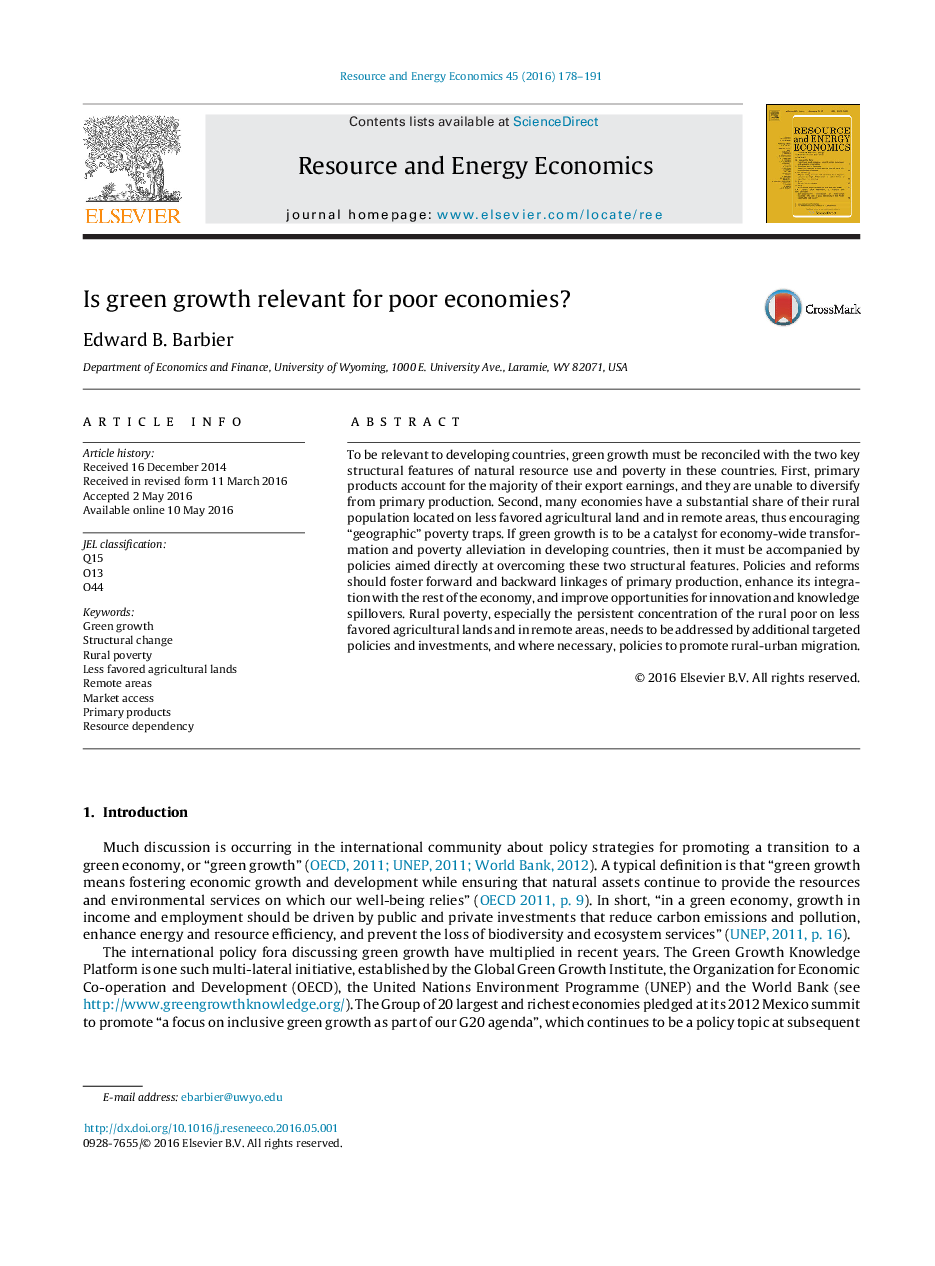| کد مقاله | کد نشریه | سال انتشار | مقاله انگلیسی | نسخه تمام متن |
|---|---|---|---|---|
| 985503 | 1480676 | 2016 | 14 صفحه PDF | دانلود رایگان |
• Green growth must account for natural resource use and poverty in poor countries.
• This includes resource dependency and geographical poverty traps.
• Otherwise, green growth may not lead to poverty alleviation and development.
• This requires policies targeted at alleviating these structural imbalances.
To be relevant to developing countries, green growth must be reconciled with the two key structural features of natural resource use and poverty in these countries. First, primary products account for the majority of their export earnings, and they are unable to diversify from primary production. Second, many economies have a substantial share of their rural population located on less favored agricultural land and in remote areas, thus encouraging “geographic” poverty traps. If green growth is to be a catalyst for economy-wide transformation and poverty alleviation in developing countries, then it must be accompanied by policies aimed directly at overcoming these two structural features. Policies and reforms should foster forward and backward linkages of primary production, enhance its integration with the rest of the economy, and improve opportunities for innovation and knowledge spillovers. Rural poverty, especially the persistent concentration of the rural poor on less favored agricultural lands and in remote areas, needs to be addressed by additional targeted policies and investments, and where necessary, policies to promote rural-urban migration.
Journal: Resource and Energy Economics - Volume 45, August 2016, Pages 178–191
